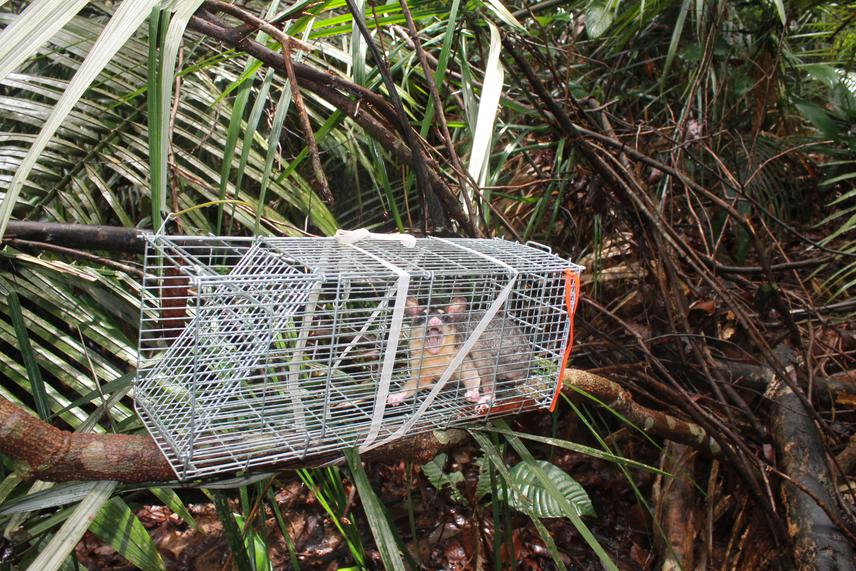Ana Filipa Mateus Ramos Marques Palmeirim
This project aims to evaluate the impacts of an archipelagic landscape on the structure of local communities of small mammals.

Philander in a trap.
This project will be carried out in Balbina’s Hydroelectric Resevoir in the Central Brazilian Amazon. Balbina is a 25-years old dam whose building flooded 4 437.63 km2 of primary forest and where more than 3 500 land-bridge islands were originate. During four field seasons (from April 2014 to April 2015), 33 of those land-bridge islands, with different sizes and degrees of isolation, and three mainland regions will be sampled. Due to the differences in behavior, habitat use, diets, body size, and use of vertical strata of the small mammals that influence the effectiveness in its capture, this taxon communities will be sampled using both live (Sherman and Tomahawk) and pitfall traps that would be placed on the ground, understory and canopy. A total of 87 trapping grids in the land-bridge islands and 24 in the mainland will be sampled.
Data on the habitat quality and presence of predators of small mammals has been collected in a previous study. Due to the problematic species identification, one male and one female captured from each species will be kept as a voucher to help in the species identification. All handling and collection of the mammals to be used in this project will be done in a humane and ethical manner matching the guidelines set forth by the American Society of Mammalogists. Previously to the present project, data regarding the habitat quality and the presence of mammalian predators of small mammals has been collected on the same sampling areas.
In this project, that data will allow to determine other variables than land-bridge islands size and degree of isolation that also explain the patterns observed on the small mammals communities inhabiting Balbina’s reservoir. Additionally, information on the ecological and functional traits of the species registered during the field work will be gathered from the literature and used to determine the species traits contributing to its persistence within the archipelagic landscape.